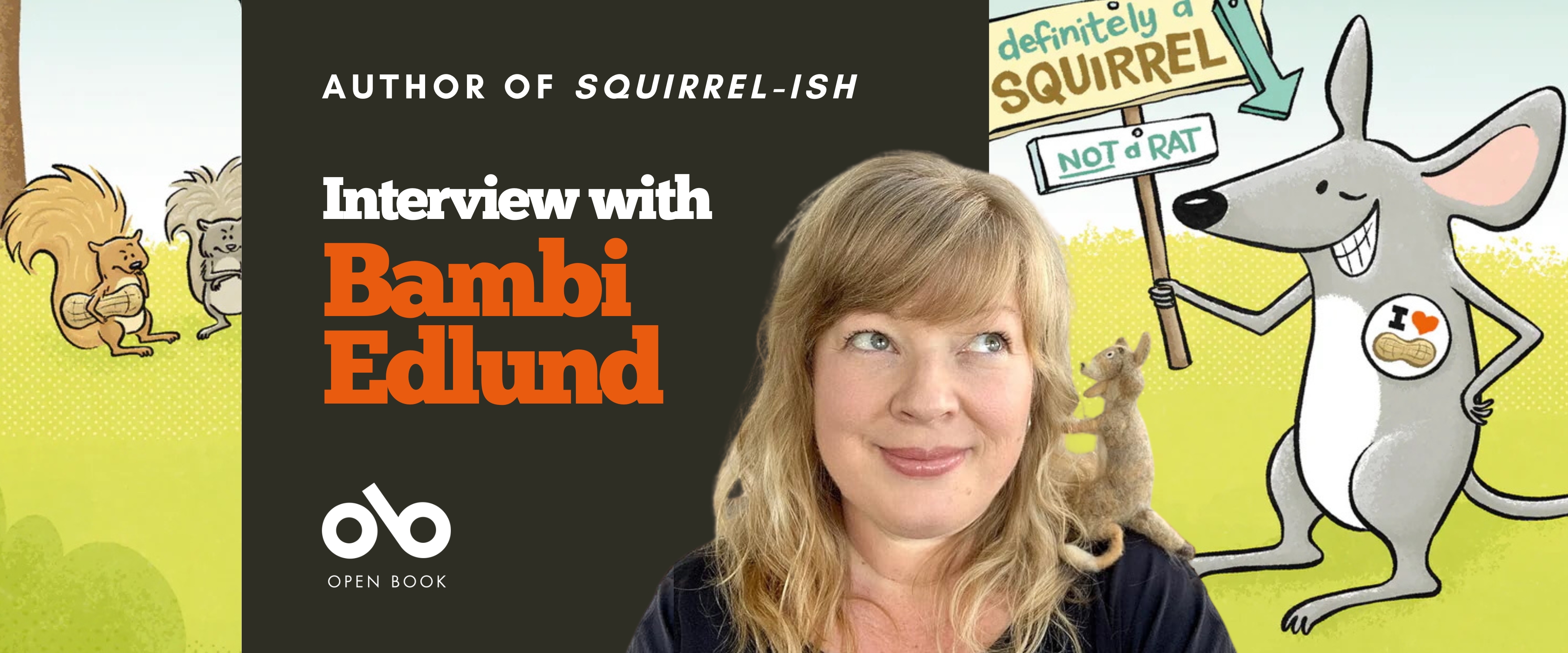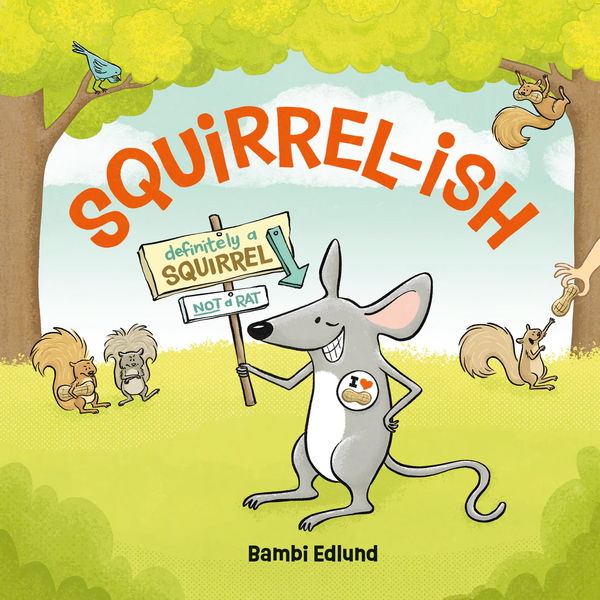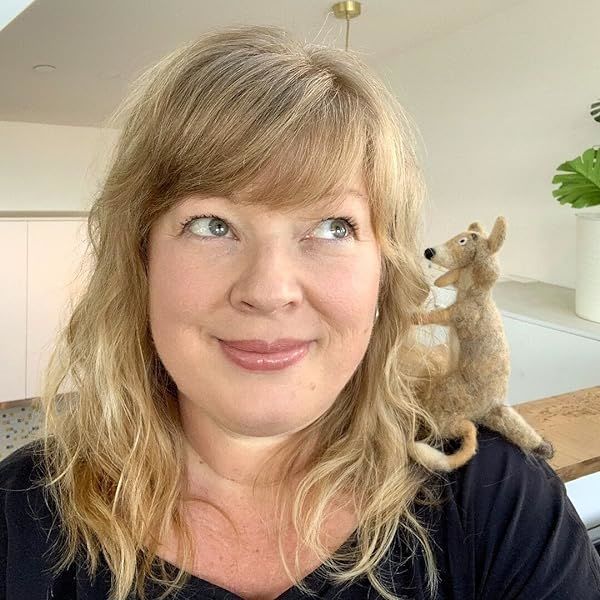An Enterprising Rat Realizes that Life as a Squirrel Isn't All Peanuts and Scampering in Squirrel-ish
Acclaimed picture book author Bambi Edlund is back with another new title to follow her previous hit, the Texas 2x2 nominated How to Make a Peanut Butter Sandwich in 17 Easy Steps.
In the freshly released Squirrel-ish (Owlkids Publishing), Edlund shares the story of an enterprising rat who sees how much better things could be if he were a squirrel. After watching those critters get their free peanuts, and not frighten folks that they cross paths with, Rat decides that he'll start mimicking these rodent cousins and reap the rewards.
It only takes a little time living the high-life of a squirrel before Rat starts to experience the other side of things, and what Squirrels have to contend with everyday. It turns out that being chased by dogs is enough to give Rat a taste of the downside of Squirreldom, and teaches him to accept that his own traits might not be that bad after all.
This is a hilarious story that carries the time-tested lesson that the grass isn't always greener on the other side. To tell us more about the book, we've got this Kid's Club BFYP interview with the author and illustrator!
Open Book:
Tell us about your new book and how it came to be.
Bambi Edlund:
My new book, Squirrel-ish, is about a rat who believes it’s simply not right that people scream and run when they see rats, yet the same people often find squirrels to be cute and give them peanuts at the park. Once, years ago, I was in a shopping mall with a rat trapped inside, running along the glass doors trying to escape. Nearby was a Starbucks with a line of people snaking from it. When the rat ran near them many of the people screamed and scattered, which of course made the rat even more frantic. I was the only person that followed along with the rat opening doors so it could make its escape, so it seems only fitting that I’m the one to tell this story!
OB:
Is there a message you hope kids might take away from reading your book?
BE:
Aside from highlighting the fact that people are totally unfair in their assessment of rat vs squirrel cuteness, the book has two main messages: One, that the grass is not always greener on the other side—assuming that others have it easier than you is rarely a well-informed stance to take. Truly seeing things from another’s point of view will usually reveal some key things you’ve missed. And two, that taking a creative approach to solving a problem yields much more interesting results than simply stewing about it… even if you do decide to go another way in the end!
OB:
Did the book look the same in the end as your originally envisioned it when you started working, or did it change through the writing process?
Your CanLit News
Subscribe to Open Book’s newsletter to get local book events, literary content, writing tips, and more in your inbox
BE:
This book actually changed a fair bit during the writing process. In the beginning, it was going to be about Rat opening a re-tail store, to supply rats with the oh-so-useful squirrel tails. A more entrepreneurial tale! In the end, however, it became clear that the re-tail store angle worked best as a single joke within the book, rather than being the ending of the story. The main arc of the book remained the same, Rat’s trial-and-error process was the fun part after all! The inclusion of the dogs proving that Rat hadn’t thoroughly thought things through made the book much stronger in the end.
OB:
What was the strangest or most memorable moment or experience during the writing process for you?
BE:
The illustrations for the book came together easily, but when I was writing the text, I had difficulties getting the tone just right. The character of Rat had been in my head for so long and I knew exactly who he was, but it was tough getting his attitude across in the third person without him coming across as too bummed out or mopey about the squirrels getting the peanuts and not him. It took several rewrites, but once I hit on the idea of Rat telling his story in the first person, it quickly fell into place. By speaking directly to the audience, Rat was able to show, not tell, which suited this book. It meant the text could be pared down to a much tighter, simpler storyline that actually told the story better, plus it brings the reader into the action in a way that worked perfectly for this story.
OB:
How do you cope with setbacks or tough points during the writing process? Do you have any strategies that are your go-to responses to difficult points in the process?
BE:
Many years ago when I was working as a graphic designer, I had a sign above my desk that said “Don’t Fall in Love With Your First Idea”. It is a rule I’ve carried over to both writing and illustration work. If you’re trying too hard to make something work and it’s just not happening, sometimes it’s best to step back and come at it from an entirely different angle. It can be so difficult to let go of an idea that you like, but I’ve found that so often there’s an even better idea waiting behind that first one, if you can bring yourself to let it go. There are no shortcuts, however—you can’t get to that second idea without giving the first one a wholehearted effort!
OB:
What's your favourite part of the life cycle of a book? The inspiration, writing the first draft, revision, the editorial relationship, promotion and discussing the book, or something else altogether? What's the toughest part?
BE:
I love the brainstorming/idea generation process so much, coming up with characters and the general storyline. I love making sketches, getting to know the characters and figuring out all the little visual details that make a book special. Working with a good editor is a wonderful experience too, I really enjoy the back-and-forth. Honing the book with someone who’s not so close to it opens up new ideas and helps work out the kinks that can be tough to figure out on your own, especially when you’re both author and illustrator, and the idea is so inextricably linked to your own brain! The toughest part for me is the promotion, it’s something I try to get better at but I have a difficult time with showing off the book and telling people that I made it, no matter how proud of it I am. I love that the wonderful marketing team at Owlkids takes care of much of the promotion, but I would like to get more comfortable with that end of the process. I do enjoy discussing the book in a format like this, I love digging into the details of it and talking about the process of making a book.
OB:
What are you working on now?
BE:
I’m in the fun stage of putting together ideas for new books and deciding (with the help of my editor) which one(s) to focus on next. I always have lots of ideas in various stages of percolation, so pulling back and gathering all of the current nuggets of ideas into a list/stack of sketches is always an exciting process. I love revisiting them all and seeing which jump out as having potential to become a full book. Sometimes two not-quite-there-yet ideas end up blending together to become one fully formed one, which is kind of magical!
______________________________________________
Bambi Edlund is an illustrator and writer living on the Sunshine Coast in British Columbia, and the author of Texas 2x2 nominated How to Make a Peanut Butter Sandwich in 17 Easy Steps. She spends much of her time drawing, sculpting, and chatting with the various critters that live nearby.







